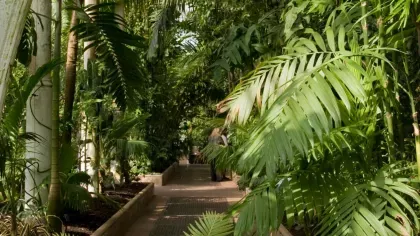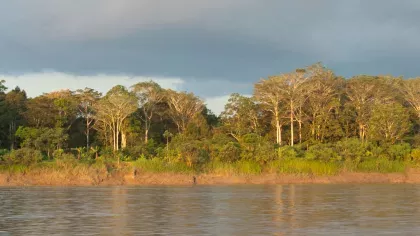Digital Amazon
Increasing access to Richard Spruce’s ethnobotanical collections as a resource for environmental change and indigenous knowledge.

Background
Richard Spruce spent the years 1849–1864 travelling and collecting plants, mainly in the Brazilian Amazon region. Alongside about 14,000 herbarium specimens he also collected 350 ethnobotanical artefacts, wrote detailed reports on plant uses, and created drawings of the people and landscape. Most of these collections are now deposited in institutions in London, including the Royal Botanic Gardens, Kew; the British Museum, the Natural History Museum and the Royal Society. They embody a wide range of information about the 19th century environment and people of the Amazon not recorded elsewhere.
Objectives
A wide range of research topics can be addressed with the Spruce collections acting as a data source and geographical focus. In addition to using the methods of modern botanical and anthropological enquiry, the perspectives of indigenous peoples are fundamental to the accurate and holistic interpretation of these materials, and to development of the project as a whole.
- To find out more about changes in landscape and environment, plant resources and cultural use of plants from the 19th century to today, and to make predictions for the future.
- Digitisation and integration of specimen and text-based data relating to Spruce collections, repatriation of data to both forest communities and scientific users, and public education for the wider public (including schools).
- Critical study of the relationship between museum collections and source communities, including re-evaluation of museum practice in light of indigenous knowledge, and the potential for development of new collections.
The research topics outlined above require a project of ambitious scale, and can be addressed through a wide range of methodologies and perspectives, including anthropology, botany and ethnobotany, archaeology, museum studies, cultural history, and indigenous studies.
Kew’s role in the project
The project is led by William Milliken and Mark Nesbitt at Kew and Luciana Martins at Birkbeck, University of London, with a large group of collaborators at museums, institutes and universities in the UK and Brazil. Diverse funding sources are being explored in order to fund the components of this large and complex project.
Project Leader
- Digital Amazon workshop held at Kew, July 2015, bringing together researchers from the UK and Brazil to view Spruce collections and develop a research plan.
- Multi-site training programme in ethnobotanical and museum methods delivered in 2016 at Kew, Jardim Botânico do Rio de Janeiro and São Gabriel da Cachoeira.
- Integration of documentation relating to Spruce’s ethnobotanical collections – whether manuscript, printed, herbarium or artefact. A pilot study is being carried out by an ethnobotany Master's student.
- Development of a long-term collaborative sustainable network of UK and Brazilian researchers and experts to deliver high-quality, research-based information on the biological, technological and cultural aspects of Richard Spruce’s collection via a digital web platform, and, community-focused resources for the benefit of Brazilian researchers & indigenous communities from where the collection came.
- Fieldwork to provide a basis for longitudinal studies of Amazonian vegetation, which can be applied to a range of different research studies including environmental and cultural change, human impacts (such as deforestation), associated shifts in access to natural resources, and economic applications (past and potential) of Amazonian plant diversity.
UK
Brazil
UK Science & Innovation Network - Global Partnerships Fund
British Council - Newton Fund
British Academy Knowledge Frontiers award
Kew collections
Richard Spruce’s ethnobotanical artefacts at Kew
Websites
Digitisation of Richard Spruce’s herbarium specimens
The book of Spruce's travels 'Notes of a botanist on the Amazon & Andes' (1908), via the Biodiversity Heritage Library

